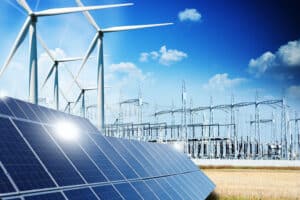Renewable energy is perhaps the most crucial technology of the 21st century. The modern data economy has created enormous growth in global energy demands, among both citizens and business alike.
I consider this modern data-driven economy to be a fourth industrial revolution, currently developing in four main directions, tied to artificial intelligence, biotech, robotics and advanced materials. This has led to a new energy reality, greatly affecting both demand and supply.
The only logical way for this growth to be sustainable is to feed the world’s devices and datacentres with clean, affordable energy. Whether solar, wind, bioenergy, hydrogen or geothermal, if nature provides us with a natural energy source, we should use it.
One nation with a unique perspective on this is Armenia, where I founded a successful renewable energy company over a decade ago. Armenia is unique because it is landlocked, and therefore is heavily reliant on imported energy, much of which is still in the form of fossil fuels. It means harnessing the power of renewables is not just an urgent ecological matter but a significant economic one too.
Armenia has a rich history as a science and technology hub. Before independence from the Soviet Union a generation ago, Armenia was the brains behind many innovations of that era. This legacy remains today, with home-grown engineering, scientific and technical skills that has led to investment and recognition from some of the world’s biggest technology companies.
Our science and engineering potential has normally been accessible at a lower cost than in other countries. So over the last 15 years Armenia has developed this crucial market, building connections between the country’s home technology sector and international hubs such as Silicon Valley.
The size of Armenia’s technology industry has grown from less than 1% of GDP in 2006 to 7.4% of GDP in 2018, expanding by over 20% each year for the last decade. Armenia’s GDP has risen 40% since 2007, including a record 7.4% in 2017. The biggest technology firms all have a presence in Armenia, including Intel, Microsoft, Google, IBM, Synopsys and Cisco.
This has been mainly driven by private investment, and continues to be. Start-ups, mergers and high-value acquisitions of Armenian technology firms by well-known western companies continue, as well as cash injected by VC funding.
Foreign governments and investors could learn from this. A combination of fantastic scientific talent, the acceleration of a new digital economy with a thirst for energy and the financial benefit of serving it with clean, domestically produced energy are all unique factors behind the success of solar in Armenia. But smart investment has as much of a role to play as science.
Government support has made a difference to Armenia’s technology sector, with ground-up initiatives, entrepreneurship development and acceleration programmes support this burgeoning sector, with hackathons and start-up support groups to events and summits / conferences.
However in this area there is more work to do and there is still room for improvement for the startup ecosystem to become a serious hub compared to Silicon Valley, Israel, Estonia, Ireland or similar countries. We are still a long way from the advanced European market and in order to solve this issue startups have to attract investors from outside markets.
The future of renewable energy
The global renewables industry is set for continued growth, led by even greater efficiency and falling prices. In time, new materials will improve the efficiency of generating electricity from sustainable sources, and this will be a catalyst for greater sustainable energy market share.
Adoption among consumers will be driven by new kinds of flexible solar panels, and we already see photovoltaic materials being part of architectural planning, closely integrated with overall building construction, and expect this to become even more widespread.
The idea of an “active house,” referring to a building producing its own energy, not merely acting as a passive consumer, was once an idea that was only possible some time in the future, but today’s organic photovoltaic technology makes that possible now.
With the UK facing the challenge of migrating homes away from inefficient gas-powered home heating systems and overall high reliance on energy produced by fossil fuels, this idea may evolve to be a popular solution for Britain’s own energy challenges.
Renewable development also has even much to gain from developments in artificial intelligence (through predictable analytics) as well as robotics development. More widespread use of IoT is improving the AI data we use and robotics development leads to a reduction of human participation in processes, with production more stable and of higher quality.
And new technologies are seeing solar energy being part of automotive transportation. Put all these ideas together, it’s not hard imagine a future electric car that’s able to generate its own energy, and less dependent on a network of chargers, one of the barriers to electric car adoption today.
I like to imagine a more sustainable future where our homes and cars are not merely less damaging to the environment, but significant improvements over current examples, and I believe a crucial factor behind that comes from wider integration of renewable energy production.

